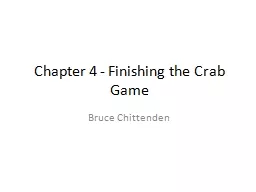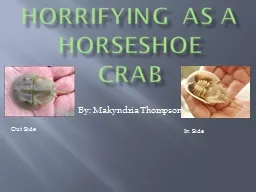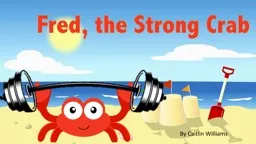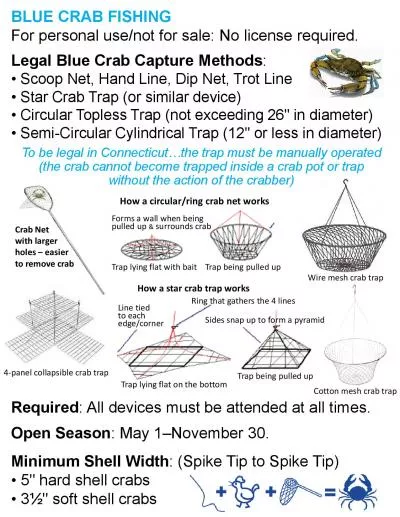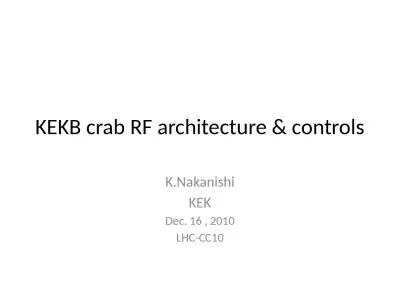PPT-Chapter 4 - Finishing the Crab Game
Author : cheryl-pisano | Published Date : 2017-04-04
Bruce Chittenden 41 Adding Objects Automatically Right Click on CrabWorld and Select Open editor Code 41 import greenfoot Actor World Greenfoot GreenfootImage public
Presentation Embed Code
Download Presentation
Download Presentation The PPT/PDF document "Chapter 4 - Finishing the Crab Game" is the property of its rightful owner. Permission is granted to download and print the materials on this website for personal, non-commercial use only, and to display it on your personal computer provided you do not modify the materials and that you retain all copyright notices contained in the materials. By downloading content from our website, you accept the terms of this agreement.
Chapter 4 - Finishing the Crab Game: Transcript
Download Rules Of Document
"Chapter 4 - Finishing the Crab Game"The content belongs to its owner. You may download and print it for personal use, without modification, and keep all copyright notices. By downloading, you agree to these terms.
Related Documents

